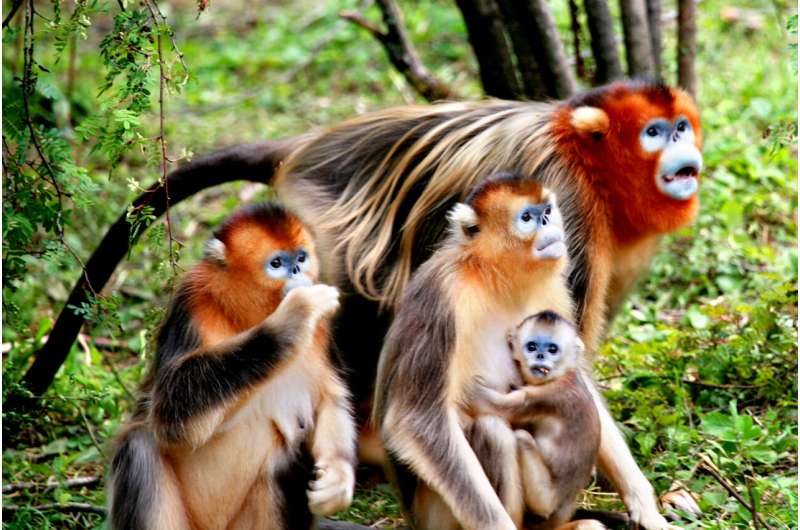Protected areas buffer climate change for biodiversity

Climate change is emerging as a top threat to biodiversity according to the latest Global Assessment Report on Biodiversity and Ecosystem Services. Plant and animal species face greater risks of thermal stress as climate change pushes temperatures beyond their thermal tolerance.
A new study, published in Science Advances on Nov. 2, shows that terrestrial protected areas not only provide habitat, but also offer a thermal buffer against climate change, thus serving as climate change refugia for biodiversity.
This study was led by scientists from the Institute of Atmospheric Physics of the Chinese Academy of Sciences, in collaboration with colleagues from China's Nanjing University of Information Science and Technology, the UN Environment Program World Conservation Monitoring Center Europe (UNEP-WCMC Europe) and the Forest & Nature Lab at Ghent University in Belgium.
The study reveals that, as compared to nonprotected areas that are often disturbed or converted to other land uses, protected areas of natural and seminatural vegetation effectively cool the land surface temperature. In particular, they lower the local daily maximum temperature in the tropics, and reduce diurnal and seasonal temperature ranges in boreal and temperate regions. Vegetation in protected areas has a higher amount of foliage in the canopy than in nonprotected areas even of the same vegetation type, which modulates local temperatures through physiological and biophysical processes.
"The cooling effect of protected areas on daily and seasonal maximum temperatures is particularly important because it can protect species in the wild from episodes of extreme heat," said Dr. Jia Gensuo, corresponding author of the study. "Under a warming climate, as heatwaves are becoming more frequent and more intense, protected areas create thermal refugia."
According to Dr. Pieter De Frenne, who has been working on microclimatic buffering of macroclimate warming in forests and is one of the authors, biodiversity responses to climate change are largely determined by microclimate, i.e., the local set of atmospheric conditions near the ground, which is modulated by habitats and landscape features at the local scale. "Protected areas provide shaded habitats that can moderate biotic responses to macroclimate warming," he explained.
Nature conservation is increasingly recognized as a nature-based solution contributing to global climate targets by preventing carbon emission from land-use change and by enhancing carbon removal from the atmosphere. This study shows that the effectiveness of nature protection in stabilizing local climates cannot be ignored. Protected forests effectively slow the rate of warming, with a warming rate in protected boreal forests up to 20% lower than in the surroundings.
"The slowed rate of warming is particularly important for species in the boreal regions because the northern high latitudes have warmed faster than the rest of the world," said lead author Dr. Xu Xiyan. "Protected areas provide a home for threatened species, and the home is air-conditioned naturally."
"Protected areas have long played a key role in the conservation of nature. However, climate change can affect the ability of protected areas to achieve their conservation objectives. The demonstration that protected areas can significantly contribute to climate mitigation and adaptation highlights the need to tackle the biodiversity and climate crises simultaneously," said Dr. Elise Belle, who has worked for UNEP-WCMC for almost a decade and is a coauthor of this study.
More information: Xiyan Xu et al, Protected areas provide thermal buffer against climate change, Science Advances (2022). DOI: 10.1126/sciadv.abo0119. www.science.org/doi/10.1126/sciadv.abo0119
Journal information: Science Advances
Provided by Chinese Academy of Sciences





















